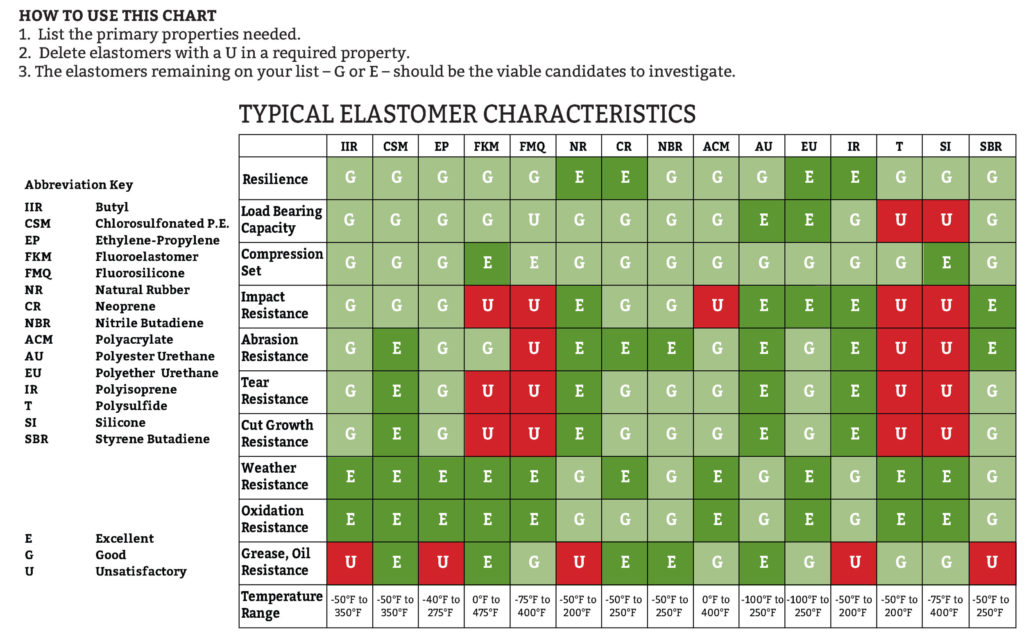Elastomer Definition
Polyurethane elastomers (urethane elastomers) are one type of a large family of elastic polymers called rubber.
There are 14 types of rubber in general use. All of these polyurethane elastomers have been commercially successful, but they are all different in several ways.
 Download our table of typical elastomer characteristics as a PDF
Download our table of typical elastomer characteristics as a PDF
Rubber-like solids with elastic properties are called elastomers. The term elastomer — a contraction of the words elastic polymer — covers a group of linear polymers that exhibit a large range of elastic deformation when a force is applied. Often times, they can be stretched to several times their original size. When the force is released, the part will return to its original shape. This can be repeated multiple times with similar results.
The term elastomer — a contraction of the words elastic polymer — covers a group of linear polymers that exhibit a large range of elastic deformation when a force is applied. Often, they can be stretched to several times their original size. When the force is released, the part will return to its original shape. This can be repeated multiple times with similar results.The elastic properties of polyurethane are the result of a change in the distance between adjacent atoms — bond length — when placed under load. Hooke’s law will generally apply such that twice the force produces twice the stretch. When the load is removed, the interatomic forces return all of the atoms to their original position and the elastic deformation is fully recovered.
The elastic properties of polyurethane are the result of a change in the distance between adjacent atoms — bond length — when placed under load. Hooke’s law will generally apply such that twice the force produces twice the stretch. When the load is removed, the interatomic forces return all of the atoms to their original position and the elastic deformation is fully recovered.
With elastometeric polymers, the linear chain-type molecules are twisted and curled — much like a coil spring. When a force is applied, the polymer stretches by uncoiling. When the load is removed, the molecules recoil as the bond angles return to their original, unloaded values, and the material returns to its original size and shape. The relationship between the force and stretch, however, does not follow Hooke’s law.
(Some information for this article was gathered from J.T. Black, Ronald A. Kosher, DeGarmo’s Materials and Processes in Manufacturing Tenth Addition, ).


